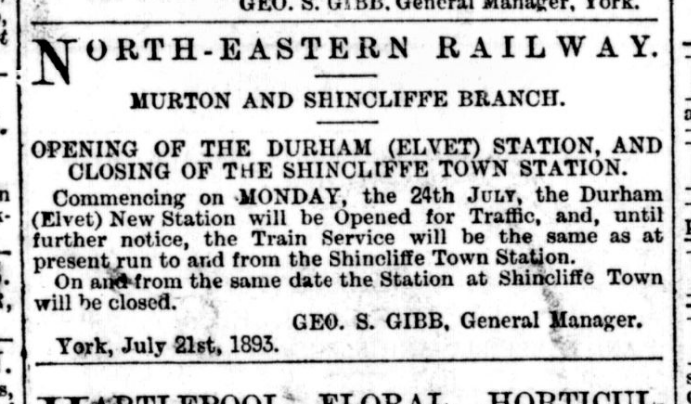Shincliffe Town Station (The first Shincliffe Station)
Shincliffe Station, situated in Shincliffe Village, was opened in 1839 on the Durham & Sunderland Railway. It was renamed 'Shincliffe Town' in 1861. The station closed in 1893 and the building was used as a Council depot until the 1990s when it was redeveloped as The Mews.
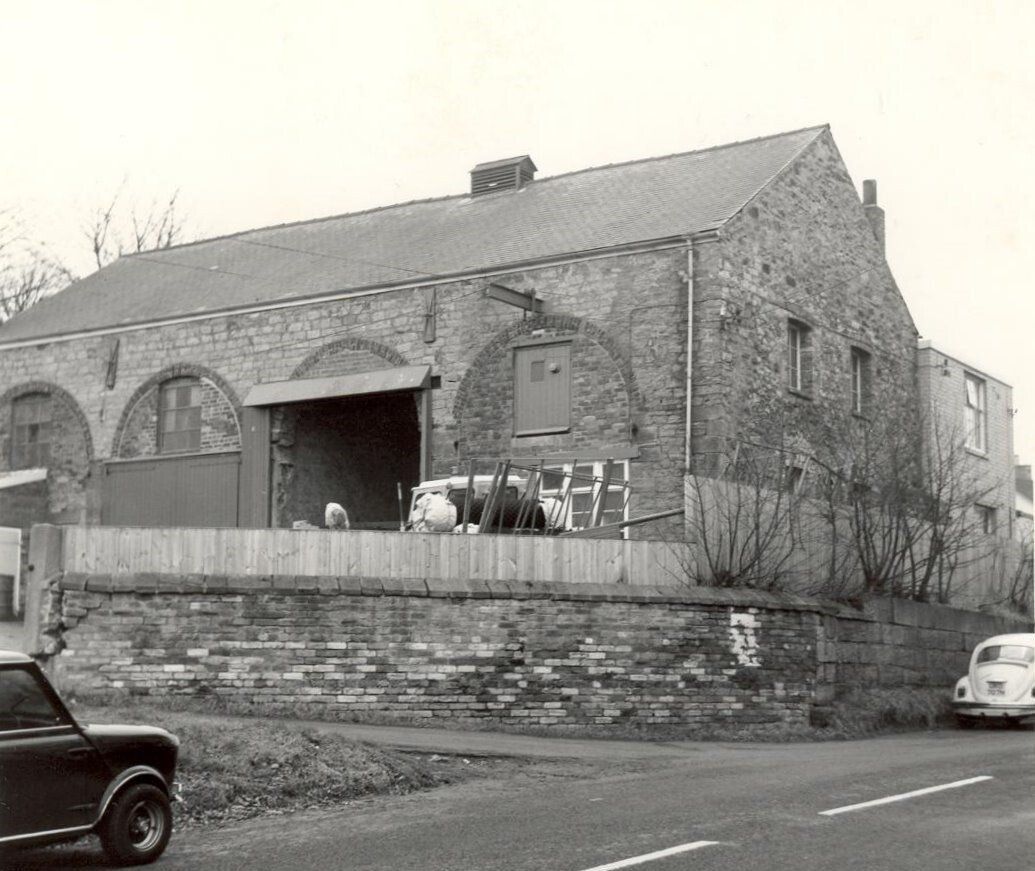
The former Shincliffe Town Station buildings as a Council Depot, c. 1970.
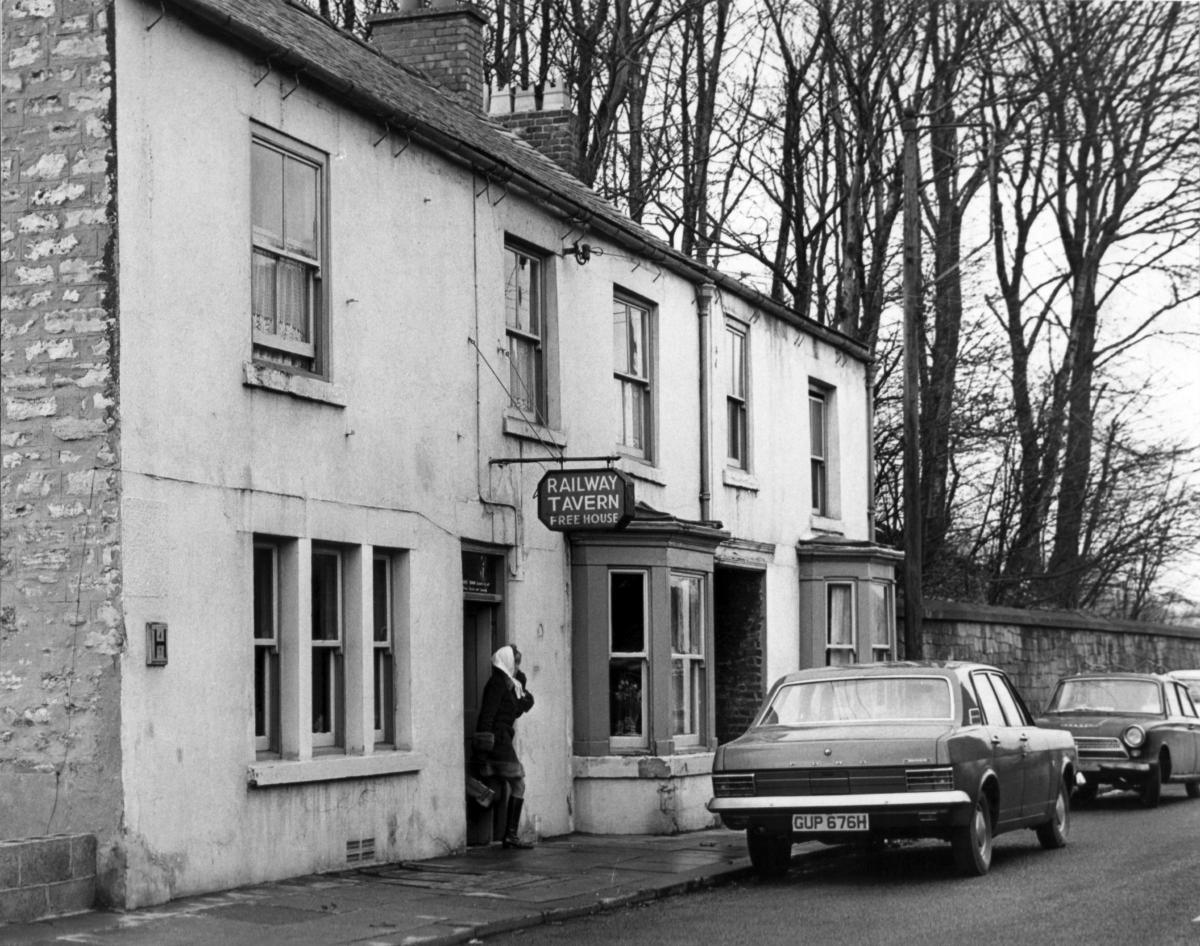
The Railway Tavern, Shincliffe Village, c. 1970.
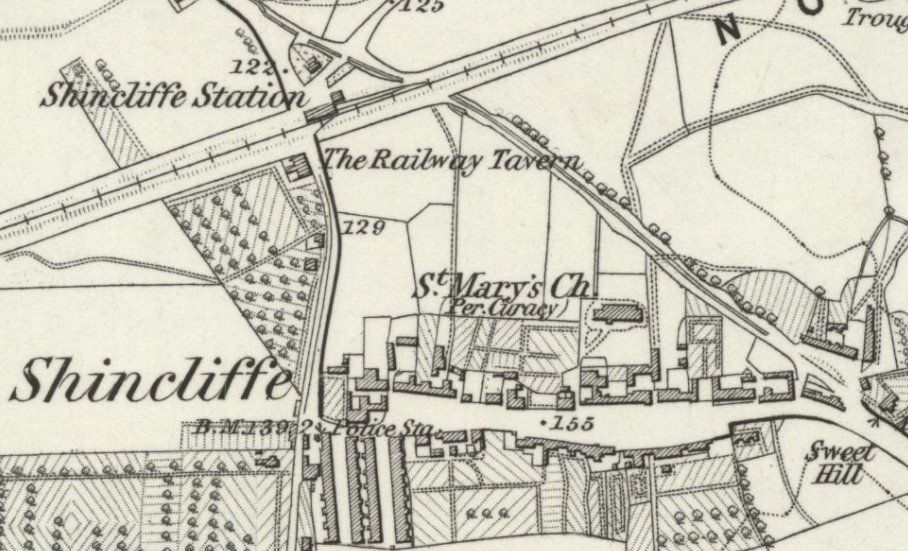
Map showing position of Shincliffe Station (opened in 1839) on the railway embankment at the northern end of Shincliffe Village. A single mineral line to the west crosses the river Wear to Houghall Colliery. The station's name was changed to 'Shincliffe Town' in 1861. Nearby, on the west side of Low Road is the Railway Tavern.
OS map 1861, surveyed 1857. Durham sheet XXVII. (original scale 6 inches to 1 mile)
Reproduced with permission of the National Library of Scotland. CC-BY-NC-SA (Creative Commons Attribution - NonCommercial- ShareAlike 4.0 Internatational) licence.
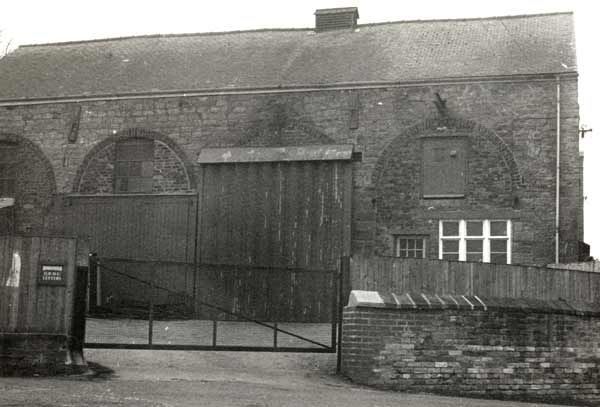
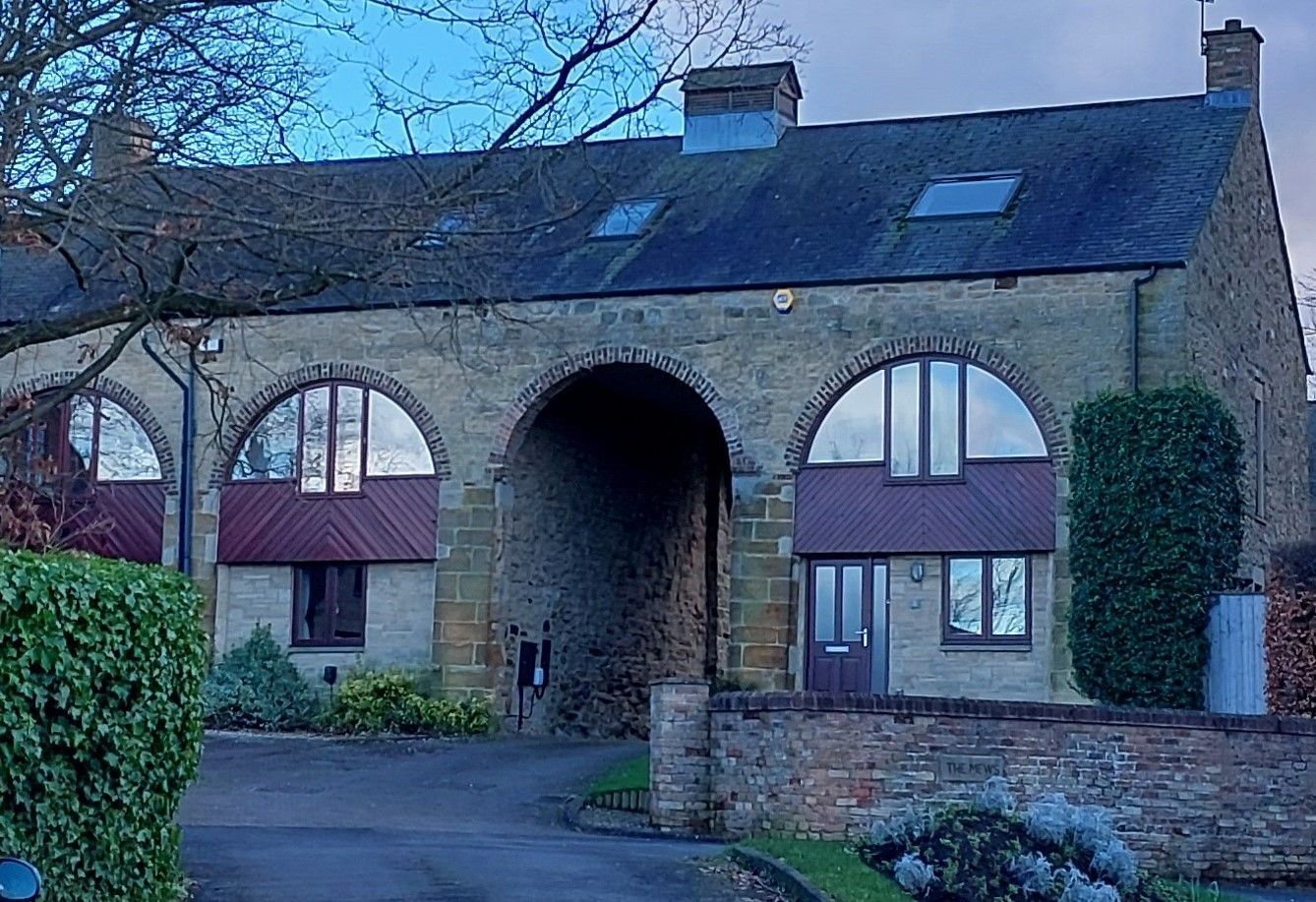
Above: The former Shincliffe Town station building. Left, as the Durham Rural District Council depot, date unknown, and Right, The Mews, Photographed in 2024.
A Short History of the Durham and Sunderland Railway and the first Shincliffe Station
1834 Durham and Sunderland (D&S) Railway Act passed authorising a rail link between the two cities plus a branch from Murton to Haswell. The location of the terminus at Durham is not specified.
1836 First section of line completed from Sunderland (South Dock) to Haswell. Wagons are hauled using a system of stationary engines and ropes.
1837 Bill authorising line from Murton to Shincliffe passed.
1837 The line reaches Sherburn House. A wagonway to Whitwell Colliery is constructed to transport coal from the newly opened colliery to Sunderland.
1839 D&S line reaches Shincliffe and a station is opened in Shincliffe village on 28th of June. Until the opening of Durham Gilesgate station in 1844, Shincliffe Station is nearest passenger terminus to Durham city. Passengers travelled in carriages attached to the coal trains at a speed of 8.5 miles per hour.
Once completed, the line from Sunderland to Shincliffe uses eight stationary engines at Sunderland, Seaton, Murton, Eppleton, Hetton, Moorsley, Pittington, and Sherburn.
1839 First coal produced at Shincliffe Colliery. A wagonway connecting Shincliffe Colliery to the D&S railway is constructed.
1842 Houghall Colliery opens and a mineral line is extended from the station at Shincliffe across the river Wear to serve Houghall Colliery.
1844 13th Jan, Newcastle journal reports 'the longest wire rope in the world' (6000 yards) has been produced in Gateshead for the Durham & Sunderland Railway.
1844 Newcastle and Darlington Junction (N&DJ) Railway opens with a station to the south of Shincliffe Colliery. The N&DJ Railway uses railway locomotives rather than stationary engines. N&DJ also opens a branch line from Belmont Junction to Durham, terminating at Gilesgate.
Branch lines from the new railway to Shincliffe and Whitwell collieries are also built.
1845 D&S Railway further extends the mineral line beyond Houghall via a tunnel under Pinnock Hill to Blades Wood near Croxdale Pit.
1846 N&DJ Railway merges with other companies to form the York & Newcastle Railway.
1847 D&S Railway together with the York & Newcastle Railway become part of the York Newcastle and Berwick Railway. From this time the two Shincliffe stations are owned by the same railway company.
1854 York Newcastle and Berwick Railway becomes part of the North Eastern Railway.
1856 Rope haulage of wagons ends on the former D&S line as railway locomotives are introduced.
1857 Durham Station at Wharton Hill opened to passengers on a North Eastern Railway branch line to Bishop Auckland from a junction at Leamside.
1861 Shincliffe Station renamed "Shincliffe Town".
1875 Shincliffe and Whitwell Collieries closed.
1886 Houghall Colliery closed.
1893 North Eastern Railway opens a new branch from Sherburn (on the former Durham and Sunderland line) to a new terminus at Durham Elvet. The Shincliffe branch together with Shincliffe Town station is closed to passengers.
1894 Durham Rural District Council is created by the Local Government Act 1894. Durham RDC uses the former Shincliffe Town station buildings (which include warehousing) as a Council depot.
1897 The old D&S line is cut back to Shincliffe Brick and Tile Works.
1919 The old D&S line is cut back to Sherburnhouse Brick and Tile Works.
1939 The line disappears completely.
1990s The remaining Shincliffe Town station buildings are converted to residential properties - 'The Mews'.
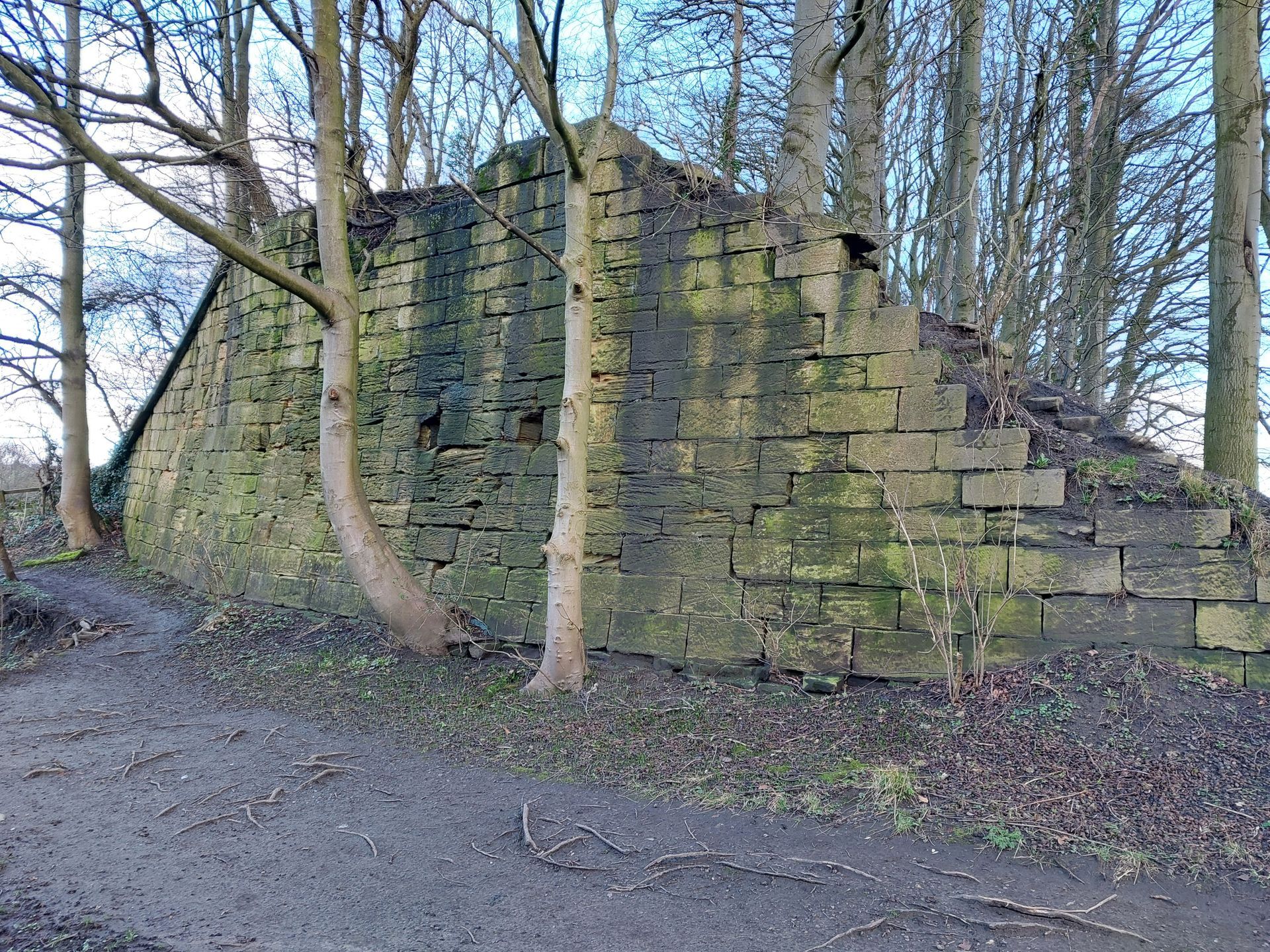
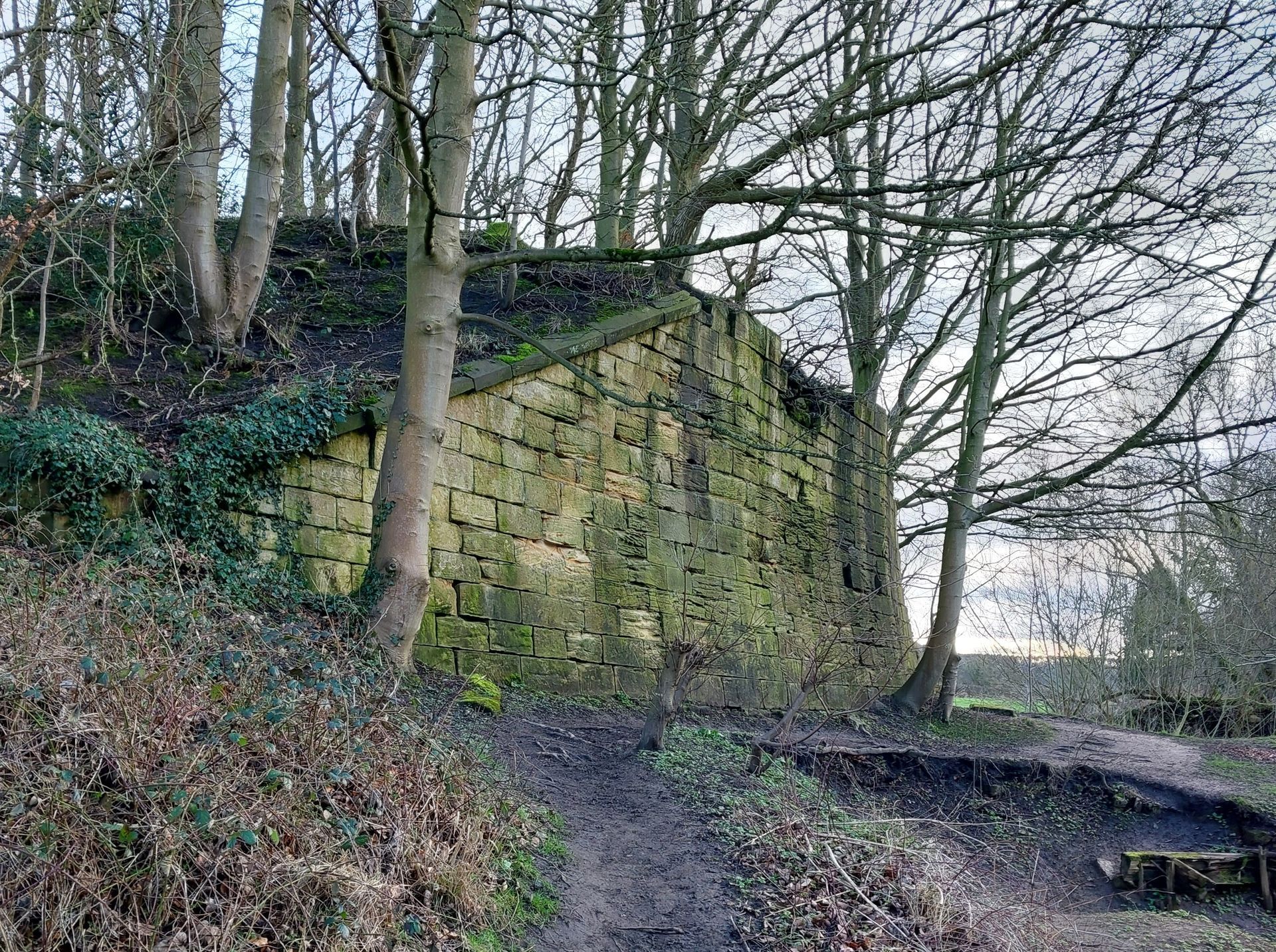
Above: Two views of the abutment for the bridge carrying the wagonway across the River Wear to Houghall Colliery.
Constructed 1842. Abandoned 1886 on the closure of the colliery. Photographed 2024.
Background image shows the old station buildings in use as a Council depot (Durham Rural District Council) in the 1960s.
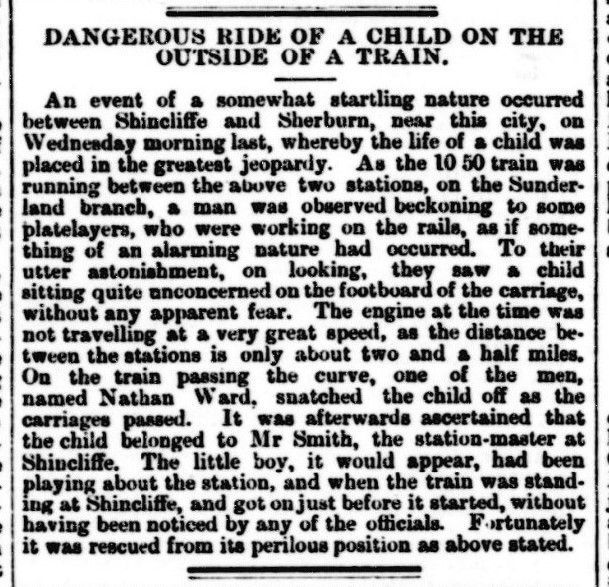
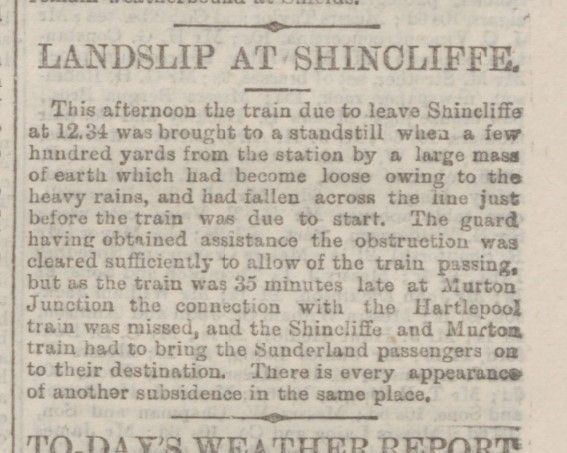
Above left: Durham County Advertiser 05/06/1868 'A Dangerous Ride of a Child on the Outside of a Train'.
Above: Sunderland Daily Echo 22/09/1891 'Landslip at Shincliffe'.
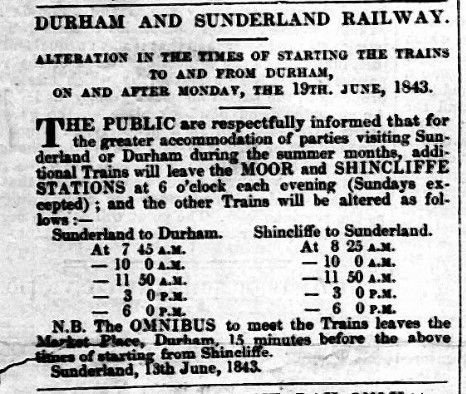
Left: Durham & Sunderland Railway Timetable changes, June 1843.
Below: The Northern Guardian reports on the forthcoming opening of Durham Elvet Station and the closure of Shincliffe Town Station. 24/07/1893.
